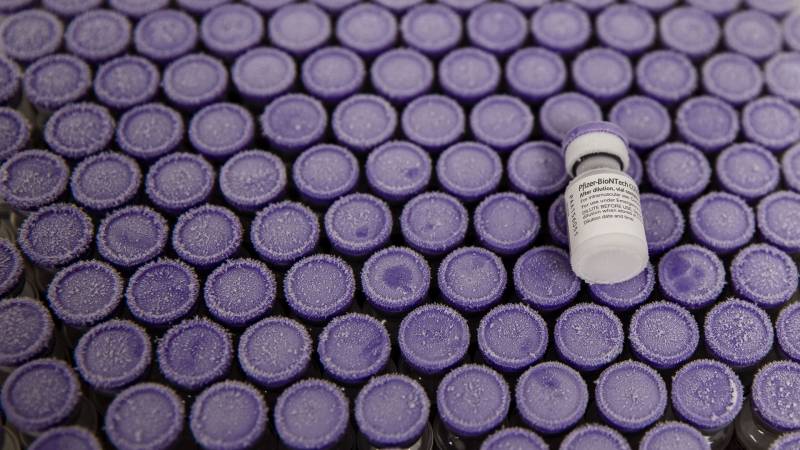“As soon as we can get more vaccines from the health department, we will make them available to all staff and detainees,” he said.
Advocates and lawyers representing ICE detainees in California said they didn’t know of anyone held at these facilities who had received the vaccine.
This week, dozens of organizations renewed their calls for state officials to include immigrant detainees in their vaccination plans and disclose the details and timeline, sending a letter to Governor Gavin Newsom and Dr. Tomás Aragón, the head of the California Department of Public Health.
“Not only have they not been vaccinating folks in ICE detention, but there seemingly does not appear to be a plan in place,” said Hamid Yazdan Panah, who directs advocacy for Immigrant Defense Advocates, one of the letter’s main signatories.
There are currently over 1,200 ICE detainees in California. The number of people held in immigration detention centers has plummeted during the pandemic to 14,200 nationwide — from 23,400 last June — in part because courts have ordered ICE to release vulnerable immigrants.
Still, nearly 9,000 people who were or are in ICE detention have tested positive for the virus so far, including hundreds in California, according to agency figures.
The state has argued in court recently that it has the right to protect people’s safety and health within its borders, even those who are in federal detention facilities. Yet with ICE declining responsibility, and California seeming to take no action, Yazdan Panah worries that immigrant detainees may not be able to receive the vaccine at all.
“What we want to see is California exercising [its] right and ensuring that individuals in these facilities are protected,” he said.
The bureaucratic confusion comes as the state struggles with one of the slowest vaccine rollouts in the nation. One of the biggest problems is that the federal government hasn’t delivered enough doses to the state, said Kiran Savage-Sangwan, who directs the California Pan-Ethnic Health Network and also sits on the CDPH’s Community Vaccine Advisory Committee.
Even with the limited supply, California is trying to speed up delivery by shifting from a complex list of at-risk populations and essential workers, to a simpler age-based system, with those 65 and older first in line.
That change, and the state’s lack of clarity around who is in charge of vaccinating immigrant detainees, may delay COVID-19 protections even longer for people held at ICE facilities, she said.
“I hope it gets resolved because it’s so important,” said Savage-Sangwan. “We really have seen major outbreaks in the detention centers and we have to, you know, not be playing hot potato with this issue.”

